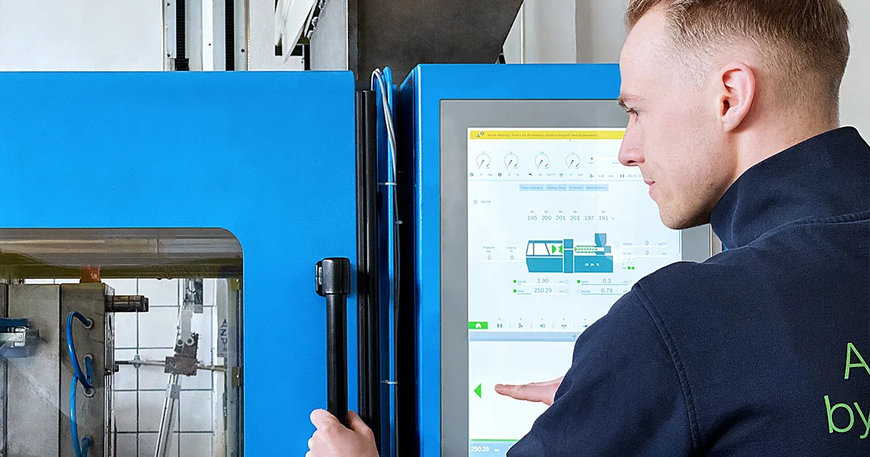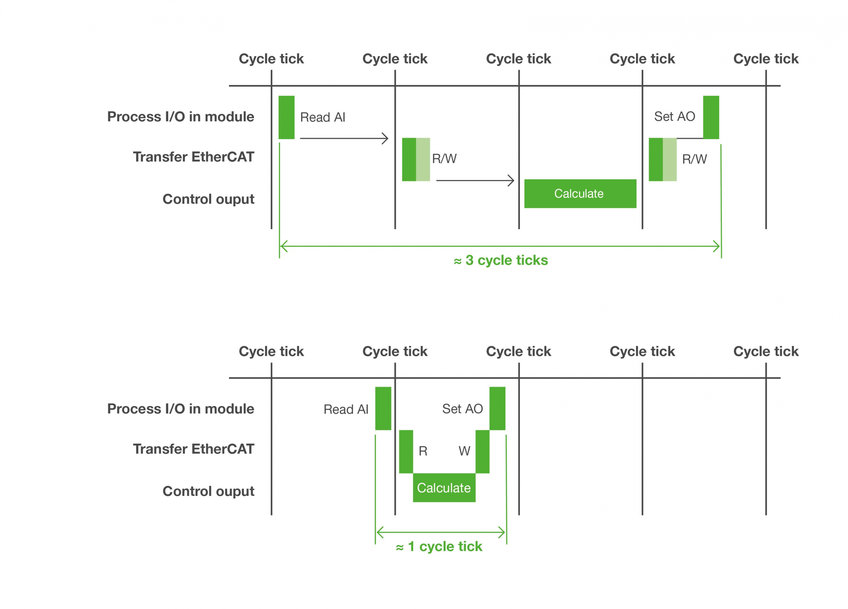metalworkingmag.com
09
'24
Written on Modified on
KEBA News
Enhancing EIMM Operations: The Role of AI and Advanced Control Technology
KEBA's integrated solutions are improving precision and efficiency in electric and hybrid injection molding machines.
www.keba.com

In electric and hybrid injection molding machines, unsynchronized movements can lead to costly damage. This article discusses how KEBA’s integrated AI assistant and control technologies ensure precise synchronization, protecting machinery and enhancing efficiency. After explaining the advantages of the KeDrive D3 pressure closed-loop control technologies from KEBA’s servo drives portfolio, more innovative and, for full electric and hybrid machine beneficial technologies will be elaborated on next. Commonly seen in the praxis, there is not only one single-axis controlling certain movement but based on the required power or torque, numerous multi-axis drive modules are in use. As a simple example, imagine an electric injection molding machine with two single-axis servo drives and two motors. Did you know that running them at the same voltage does not necessarily mean they will move exactly the same and may cause costly machine damage? The extensive pressure on one side can mechanically damage the machine parts like molds, ejectors, and injectors, or it can be sent back and damage not only the motor itself but also the machine's electronics. Therefore, fast communication and synchronization between these devices are crucial to avoid machine parts damage and unwanted machine downtime.

Synchronized & unsynchronized EIMM mold movement & possible cause
Fast, “3in1” reaction control technology for the shortest possible dead time
Fast communication and reaction between the devices is a door opener for successful & high-speed position balance control as well as controlling other processes. KEBA controllers can realize the shortest possible dead time, meaning the time needed until a change in the input causes a change in the output, with fast control feature. Usually, the industrial PC would use three cycle ticks to read, calculate and send an answer. KEBA controllers, with the Fast Reaction Control feature, can fit all of these steps into one control cycle. At the beginning of the frame, the controller reads input signals, then calculates the output values immediately and writes the output signals at the end of the scan frame. The feature works with EtherCAT and IO-Board IOs. The function influences the pressure control in the controller and improves the communication between the drives. Reduced dead time improves process quality, saves CPU performance, and guarantees the best results thanks to minimized jitter.

FPGA-supported Closed Loop with Fast Reaction Control
Synchronizing any IMM movement controlled by any drive type
As explained in our first article about pressure closed loop, pressure control, as well as now a position compensation control, can be carried out on the controller, and this used to be a golden standard in the IMM process controlling for many years still the state-of-art solution for hydraulic machines. In comparison, the new concepts, when the pressure & position control are integrated into the servo drive, lower dead times, faster pressure control behavior, and advantage of error reactions directly on the drive seem to be the reasons many OEMs make the shift. This being said, one may ask if KEBA pressure and position balance control assistants function with 3rd party drives and the answer is positive. However, the combination of KEBA controllers, servo drives, and even motors provides unlimited benefits of one-source hardware & software, resulting in the best possible performance indicators. By using the pressure control and the position balance control at the drive, our AI- assistant KePlast Position Balance Control can synchronize all movements required by the customer, depending on the application. A distinction on which movements should be controlled is made at a set-up phase, as they all have different requirements. For instance, injection movements will require most of the time two single-axis drives because of the high-pressure control. However, mold movements could be possible with one double-axis controller since no extremely high torques are expected. Both KEBA Fast Reaction Control, as well as KePlast Position Balance Control AI assistant effectively run on any servo drive with 1, 2, or 3 axes which also means on all KeDrive D3 servo controllers.
KePlast Position Balance Control AI module and its benefits for the end user
The perfect cross-communication in the pressure and position balance control is happening in the following seven steps:
- The master axis receives the target pressure from the controller and the current pressure from the AI module.
- From these set values, a speed reference is calculated according to "Pressure control on the drive."
- In addition, the master axis compares its current position with the current position of the slave axis.
- From these two positions, a correction is calculated for the speed reference determined by the pressure control.
- This correction is added for one axis and subtracted for the other depending on the position.
- The master axis then sends the calculated setpoint 1 to motor 1 and the setpoint 2 to the slave axis, which forwards it to motor 2.
- In this way, not only is the pressure correctly controlled, but also the position difference between the two motors is kept at zero.
Note: one pressure sensor is required on the master axis.

Communication scheme – an example with two single-axis controllers
There are numerous advantages of the above-described application. Firstly, the pressure control takes place at the drive with 125us, which is considered a benchmark value for a cycle length. Secondly, the drive can react directly in case of error and thus avoid damage and minimize downtimes. Due to Fast Reaction Control, the dead times caused by the cross-communication are also minimized, as the whole controller cycle only requires one cycle tick instead of three.
www.keba.com

Communication scheme – an example with two single-axis controllers
There are numerous advantages of the above-described application. Firstly, the pressure control takes place at the drive with 125us, which is considered a benchmark value for a cycle length. Secondly, the drive can react directly in case of error and thus avoid damage and minimize downtimes. Due to Fast Reaction Control, the dead times caused by the cross-communication are also minimized, as the whole controller cycle only requires one cycle tick instead of three.
www.keba.com

